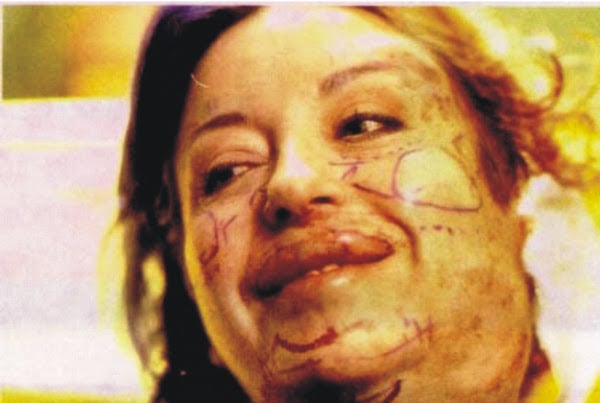Week 4: Medical Technology + Art
 |
| Sculptures and models of cytoskeletal microfilaments http://d1dvw62tmnyoft.cloudfront.net/content/joces/116/7/1157/F1.large.jpg |
While there may be some extent to which medicine influences
art, the impact is most likely limited at most. This was my initial perspective
before studying this week’s materials as I had never thoroughly thought about the
connections between art and medicine.
Magnetic resonance imaging (MRI), a procedure I have never experienced, is one
example Dr. Vesna as well as Silvia Casini mentions. They contend that “an MRI
examination, in fact, is acoustic even when the noise of the machine, the voice
of the actors involved in the procedure, and the noise present in the images
themselves are continually hushed by those who create and read the images after
the examination” (Casini 76). This perspective is one I had never considered
since I considered the sounds that the machine emits is simply a by-product of
the procedure. However, once someone focuses on the sounds, it is possible that
a rhythm can be detected. Consequently, the loud noise and rhythm in addition
to the mirrors create a scenario in which the subject is seemingly removed from
the world and becomes isolated in another reality.
 |
| A patient seeks to overcome her arachnophobia with VR therapy http://www.hitl.washington.edu/projects/burn/cleanspider4inch100.jpg |
Another example that expands on the idea of another world is virtual
reality. With virtual reality, the person wearing the headset enters a
different reality not only visually but also tactilely. Diane Gromala mentions
that, despite being on Earth, the headset tricks the mind and body into
partially believing in the virtual reality. As a result, she suggests a medical
procedure of allowing patients to take part in this art is similar to a therapeutic
effect, “a drug trip.”
 |
| Orlan, a French artist, is best-known for her work with plastic surgery https://news.artnet.com/wp-content/news-upload/2016/01/OrlanA.jpg |
Finally, and more explicitly, is the instance of a woman
named Orlan using plastic surgery, something I do not intend on having performed on me to depict art, not beauty. This woman
drastically changes her appearance through a series of through a series of
operations in order to resemble qualities of particular famous paintings. She hopes
to elucidate how science and technology can change and manipulate the human
body to create a work of art, which is similar to some extent with Casini’s proposal
that science and technology with the human body can produce artworks.
Works Cited
Works Cited
Casini,
Silvia. "Magnetic Resonance Imaging (MRI) as Mirror and Portrait: MRI
Configurations between Science and the Arts." Configurations 19.1
(2011): 73-99. Web.
Ingber,
Donald E. "The Architecture of Life." Sci Am Scientific American
278.1 (1998): 48-57. Web.
MutleeIsTheAntiGod.
"Orlan - Carnal Art (2001) Documentary." YouTube. YouTube, 13
Mar. 2011. Web. 23 Apr. 2016.
TEDxTalks.
"TEDxAmericanRiviera - Diane Gromala - Curative Powers of Wet, Raw
Beauty." YouTube. YouTube, 07 Dec. 2011. Web. 23 Apr. 2016.
Uconlineprogram. "Medicine Pt1, Pt2, Pt3." YouTube. YouTube, 21 Apr. 2012. Web. 23 Apr. 2016.
Uconlineprogram. "Medicine Pt1, Pt2, Pt3." YouTube. YouTube, 21 Apr. 2012. Web. 23 Apr. 2016.
I agree with you in that the connection between art and medicine is quite limited. I have experienced an MRI before and I remember there being a distinct noise of the machine. I like how you tied this experience to a sort of virtual reality. I hadn't thought about this before this weeks lectures. It is a pretty fascinating concept. I was also intrigued and somewhat disturbed by the work of Orlan. I don't believe that this is good for societies view on beauty.
ReplyDelete